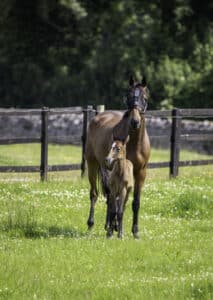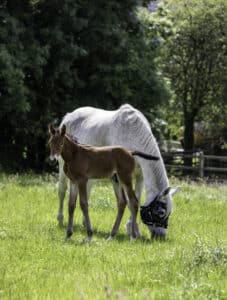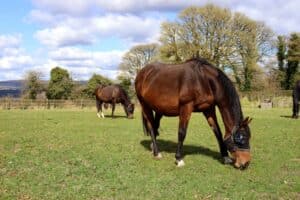Illuminating The Path To Successful Breeding
The Power Of Light To Maximise Fertility
Every mare owner knows there are many plans to be made when thinking about the breeding season. Which sire should I breed my mare to? What form of breeding to use? Which nutritional plan will suit my mare best? But one thing mare owners should not overlook is the importance of light.
While the equine industry has made significant advancements in areas like nutrition, veterinary medicine, and training technologies, the importance of adequate and high-quality daily light exposure for horses has been overlooked until recently. It’s not just the quality of light that matters but also the duration, ensuring that horses receive the advantages of a long summer’s day throughout the year.
The mare has a gestation period of roughly 11 months and 11 days, but foals can be born anywhere from 320 to 365 days of gestation. Before breeding, during gestation, and after foaling, providing correct lighting to your mare is essential, not only for her but also to help ensure the development and growth of a healthy foal.
How Blue Light Treatment Works

The most effective way to bring forward the horse’s breeding season is to shift the horse’s exposure to lighting from a short light day to a long day during the mid-winter months.
This rapid transition in lighting will suppress melatonin levels and activate reproduction, growth and milk production hormones. Long nights during the winter months result in long durations of high melatonin production shutting down the mare’s reproductive system. Suppressing the rise of melatonin via natural or artificial light lengthens the day and triggers the start of the mare’s reproductive cycle in the spring.
Correct lighting can have many benefits for your breeding stock. As reproductive hormones gradually rise over 6-8 weeks of a long daylight cycle, they are responsible for:
- Increased mare and stallion fertility
- Early ovulation
- Normal pregnancy lengths
- Optimum foal growth in utero
“I have been using the Equilume light masks for several years on my own personal mares with excellent results. I use them to bring forward reproductive activity in both donor and recipient mares. By using the masks, I am able to have my imported mares bred, embryos flushed and into recipients (that also wear the light masks) at the beginning of September. The mares accept the masks well and I find it is much better for their health to be out moving around in their paddocks rather than in stables under lights.”
- Dr Kylie Hardwicke

When To Use Blue Light Treatment To Enhance Your Mare’s Fertility
Equilume blue light treatment, creating a long summer’s day, should begin approximately 70 days in advance of desired breeding for non-pregnant mares. For pregnant mares, blue light treatment should begin approximately 90-100 days before their foaling due dates. For optimum results, the long day blue light therapy should be maintained until mares are scanned back in foal.
Let’s Not Forget About The ‘Boys’
Stallions too, in this busy covering period, will have additional demands during the breeding season. Stallions, whether in competition or solely at stud, need to be fit and agile as there is an increased energy demand during the covering period. Providing adequate light duration can boost a stallion’s optimum fertility. While they can breed all year long, fertility is highest during the longest days of the year. Published studies have shown that semen volume, sperm concentration, libido and reproductive behaviour are all positively influenced by the duration of light. It is recommended that long-day light therapy for stallions also be initiated 70 days prior to the time of peak reproductive activity. This is especially important for young stallions facing their first breeding season when testes size naturally limits the amount of sperm that can be produced.
The Power of Proper Lighting Routine
By supporting the horse’s internal body clock, their natural internal timing system, proper lighting helps in maximising reproductive activity in mares and stallions, as well as maintaining muscle tone, promoting a sleek and shiny coat, strengthening the immune system, enhancing appetite, and positively influencing mood and behaviour in all horses.
It is clear as day that light plays a vital role in a horse’s physical and mental well-being. By understanding the importance of proper lighting and its impact on the horse’s internal rhythms, you can provide them with an environment that supports their health and enables them to perform at their best!
For more information on selecting the best lighting products and to plan a lighting regime to maximise your breeding performance, visit www.equilume.com or contact Amandine & Max directly. amandine@equilume.com | max@equilume.com




